
Explore Mexico’s beauty and culture with our comprehensive travel guide. Discover top destinations, cuisine, and local insights.
Home • Destination • Mexico Travel Guide

“The most beautiful in the world is, of course, the world itself.” - Wallace Stevens
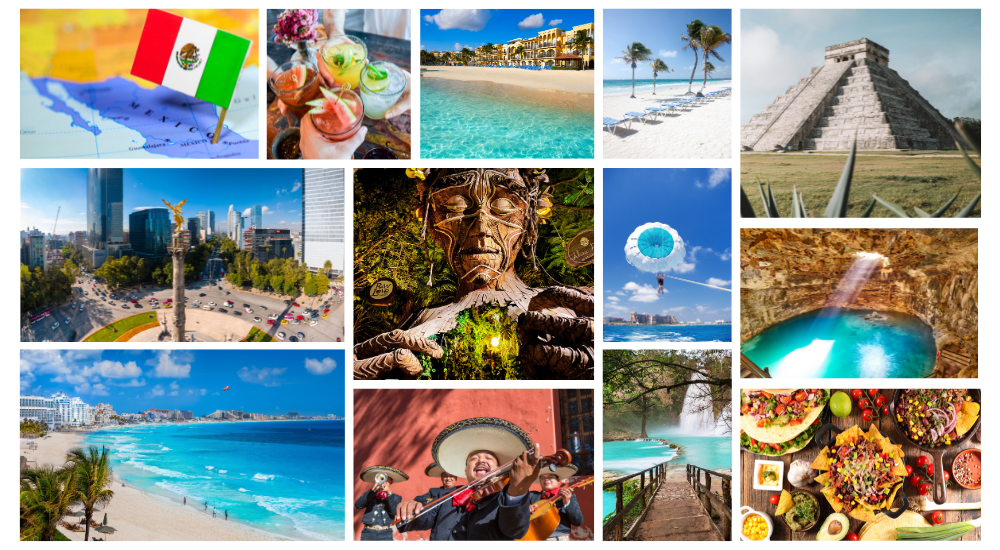
For those planning a vacation in Mexico, this diverse nation offers a wide range of experiences. You can explore ancient sites like Chichen Itza and Teotihuacan, enjoy the bustling atmosphere of Mexico City, relax on the beaches of Playa del Carmen, and wander through the charming streets of Oaxaca.
Mexican cuisine ranges from tasty street tacos to flavorful mole(sauce) dishes, and the friendly locals enhance the overall experience. Mexico combines a rich history with modern attractions for a memorable vacation.

Most countries offers flights directly into Mexico, connecting or direct flights via the USA are also available.
Booking in advance is recommended! Here are a list of international airports in Mexico.
Located in Mexico City, it is the largest and busiest airport in the country, offering numerous international flights.
Located in Cancún, this airport serves as a major entry point for tourists traveling to the Yucatan Peninsula and the Riviera Maya.
Located in Guadalajara, it’s the second-largest airport in Mexico and an important hub for domestic and international flights.
Located in Monterrey, this airport serves the northeastern region of Mexico and has international connections.
Located near the U.S.-Mexico border, Tijuana’s airport provides convenient access to the southern California region in the United States.
Located in Puerto Vallarta, it caters to tourists visiting the Pacific coast of Mexico.
Located in San José del Cabo, it serves the popular tourist destinations of Cabo San Lucas and San José del Cabo.
Located in Mérida, it serves the Yucatan Peninsula and provides international connections.
Located in Oaxaca, it offers international flights in addition to domestic services.
Mexico has a well-developed domestic flight network. Major cities have airports with frequent flights, making it convenient to travel longer distances within the country. Airlines like Aeroméxico, Volaris, and Interjet operate domestic routes.

Getting around Mexico is relatively easy, thanks to a variety of transportation options. Whether you want to travel locally or domestically there are many way for you to make your way around the country. Here are the most common ways to get around the Mexico:
Buses are a popular and cost-effective means of transportation in Mexico. There are various types of buses, from luxury coaches to economical options. Companies like ADO, ETN, and Primera Plus offer comfortable long-distance bus services. Local buses and colectivos (shared vans) are available for shorter routes within cities.
Mexico has limited passenger train services, but there are scenic train routes like “El Chepe” in the Copper Canyon region. These provide a unique travel experience.
Major cities like Mexico City, Guadalajara, and Monterrey have metro and light rail systems that are affordable and efficient for navigating within the city.
Taxis are readily available in most cities. In addition to traditional taxis, ridesharing services like Uber and DiDi operate in many Mexican cities.
Renting a car is a convenient option, especially if you want to explore less-traveled areas. Most major international car rental companies have a presence in Mexico.
In coastal areas, ferries and boats can be used to travel between islands, coastal cities, or to reach destinations like Isla Holbox or Cozumel.
In some cities, like Mexico City, there are bike-sharing programs and bike lanes, making it possible to explore urban areas on two wheels. In more rural areas, cycling can be a good option for leisurely travel.
In city centers and tourist areas, walking is an excellent way to explore. Many cities have pedestrian-friendly zones and promenades.
When traveling in Mexico, especially if you’re using public transportation, be prepared for different levels of service and comfort depending on the region. Always consider factors such as safety, distance, and local customs when choosing your mode of transportation. Additionally, research the specific transportation options available in the region you plan to visit, as some remote areas may have limited choices.
Accomodation

The currency used in Mexico is the Mexican Peso, abbreviated as “MXN” or represented by the “$” sign. Banknotes and coins in various denominations are used for daily transactions, and the currency is readily accepted throughout the country.
Banknotes and Coins: Mexican banknotes come in various denominations, with the most common being 20, 50, 100, 200, 500, and 1,000 pesos. Coins are also widely used and are available in denominations of 5, 10, and 20 pesos, as well as smaller centavo coins (100 centavos make up 1 peso).
Currency Symbol: The symbol for the Mexican Peso is “$.” This symbol closely resembles the dollar sign used for the United States dollar, but it is often distinguished from the U.S. dollar by the addition of two vertical lines or slashes through the “S,” making it “$$.” These lines help clarify that the currency being referred to is the Mexican Peso and not the U.S. dollar.
Widespread Acceptance: The Mexican Peso is widely accepted throughout the country, and you can use it for various transactions, including shopping, dining, transportation, and accommodations. Credit and debit cards are also commonly accepted in major cities and tourist areas.
ATMs: ATMs (Automated Teller Machines) are widely available and commonly used in Mexico, making it convenient for both locals and travelers to access cash and conduct financial transactions.
Currency Exchange: You can exchange your foreign currency for Mexican Peso at banks, currency exchange booths, and some hotels. Rates may vary slightly between different providers, so it’s a good idea to compare rates before exchanging.
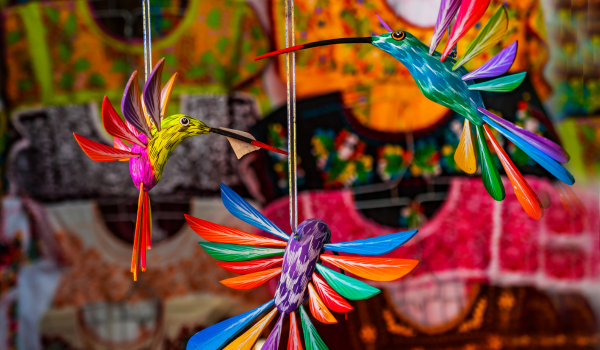
Shopping in Mexico offers a delightful blend of traditional and modern experiences, where you can explore a wide range of products and immerse yourself in the country’s vibrant culture. Here’s a description of shopping in Mexico:
Here are some of the top malls in Mexico: La Isla Shopping Village (Cancún, Quintana Roo), Santa Fe Shopping Center (Centro Santa Fe) Mexico City and Plaza Forum (Acapulco, Guerrero), Paseo Nuevo (Hermosillo, Sonora) and Plaza Galerías (Torreón, Coahuila).
Mexico is known for its colorful and bustling local markets, where you can find an array of goods, from fresh produce and handcrafted souvenirs to clothing and jewelry. Mercados are excellent places to haggle for prices and interact with local vendors. Some famous markets include Mercado de la Merced in Mexico City, Mercado 28 in Cancún, and Mercado de Abastos in Guadalajara.
Mexico is renowned for its artisanal craftsmanship. You can shop for beautifully crafted ceramics, textiles, pottery, and intricate handwoven rugs. Markets like the Bazar del Sábado in Mexico City and the markets in Oaxaca are excellent places to discover these treasures.
Traditional Mexican clothing, such as colorful embroidered blouses (huipiles) and dresses, is a favorite among tourists. In addition to traditional clothing, modern boutiques in urban areas offer contemporary fashion.
Talavera pottery is a well-known Mexican art form, characterized by its intricate hand-painted designs. Puebla and Dolores Hidalgo are renowned for their Talavera pottery.
Visiting Mexico for the first time promises an exciting adventure filled with diverse experiences and cultural discoveries. One of the highlights is exploring ancient ruins, such as the iconic Chichen Itza, the majestic Teotihuacan, and the mystical Palenque, offering a glimpse into the rich history of the Maya and Aztec civilizations. Vibrant cities like Mexico City, Guadalajara, and Monterrey beckon with a mix of modern and historic attractions, including world-class museums, bustling markets, and charming neighborhoods.
Tourists can savor authentic Mexican cuisine, from the tantalizing flavors of street tacos and tamales to the complex richness of mole dishes. Mexico’s beautiful coastline showcases some of the world’s most breathtaking beaches in destinations like Cancún, Playa del Carmen, Tulum, Puerto Vallarta, and beyond, inviting travelers to relax on pristine white sands and swim in crystal-clear waters.
Colonial towns like San Miguel de Allende, Oaxaca City, and Puebla captivate with their picturesque architecture, historic streets, and traditional crafts. The country also hosts vibrant cultural festivals, including the colorful Day of the Dead (Dia de los Muertos) celebrations and the mesmerizing Guelaguetza in Oaxaca, both teeming with music, dance, and elaborate costumes.
Mexico’s diverse landscapes, from lush jungles and cenotes in the Yucatan to the dramatic vistas of the Copper Canyon, offer opportunities to discover exotic wildlife, tropical flora, and outdoor adventures. Engaging with friendly locals provides insights into Mexican culture, traditions, and a warm sense of hospitality, making the first visit to Mexico an unforgettable and enriching journey.
Mexico is a diverse and vibrant country with a multitude of cities that offer unique cultural, historical, and natural attractions. While the “top” cities to visit can vary based on individual interests, here are a few popular cities to consider when planning your next vacation in Mexico:
The capital city is a cultural and historical hub with world-class museums, historic sites like the Zocalo, and vibrant neighborhoods like Condesa and Roma.
The Mexico City International Airport (Benito Juárez International Airport) is situated relatively close to the city center. The airport is located approximately 5 kilometers (about 3 miles) to the east of the city’s historic center, making it easily accessible for travelers to and from the heart of Mexico City.
Cancún, a world-renowned Cancún, situated on the Yucatan Peninsula’s northeastern tip, is celebrated for its immaculate beaches and crystal-clear waters. The Hotel Zone, adorned with luxury resorts, offers a vibrant nightlife. Cancún also provides a gateway to historic Mayan ruins such as Tulum and Chichen Itza.
The airport is located in the city of Cancún, just about 10 kilometers (approximately 6.2 miles) from the city center. This proximity makes it a convenient and easily accessible gateway for travelers visiting Cancún and the surrounding areas.
Read our Cancun Travel Guide for more information about vacationing in Mexico!
Famous for its colonial architecture, indigenous culture, and delicious cuisine, Oaxaca is a UNESCO World Heritage Site.
The international airport serving Oaxaca is called the Xoxocotlán International Airport (IATA code: OAX). It is located approximately 7 kilometers (about 4.3 miles) south of the main city of Oaxaca, making it a convenient and easily accessible gateway for travelers to the city and the surrounding region.
Playa del Carmen, on Mexico’s Riviera Maya, is a coastal gem known for its stunning beaches, vibrant nightlife, and easy access to natural wonders like cenotes and Mayan ruins, making it a popular destination for sun-seekers and adventurers.
The nearest international airport to Playa del Carmen is the Cancún International Airport (IATA code: CUN). Playa del Carmen is located approximately 68 kilometers (about 42 miles) to the south of the Cancún International Airport. Travelers can easily reach Playa del Carmen from the airport by various transportation options, including shuttle services, taxis, and buses, with a journey taking approximately 45 minutes to an hour.
The cultural capital of Mexico, known for mariachi music, tequila, and beautiful historic districts like Tlaquepaque.
The nearest international airport to Guadalajara is the Guadalajara International Airport (IATA code: GDL). The airport is situated approximately 16 kilometers (about 10 miles) south of the main city center of Guadalajara, making it a convenient and easily accessible gateway for travelers visiting the city and the surrounding region.
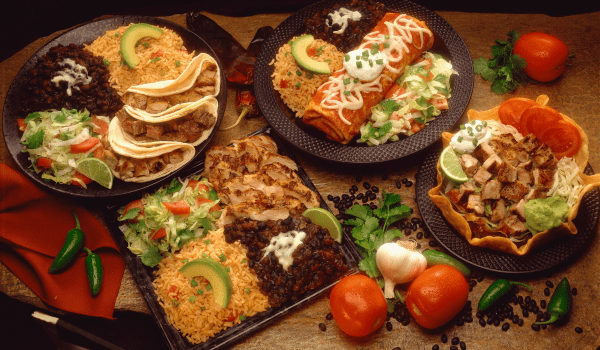
Mexican cuisine is renowned for its diverse flavors and rich culinary traditions. Here are some of the most popular foods that locals commonly enjoy in Mexico:
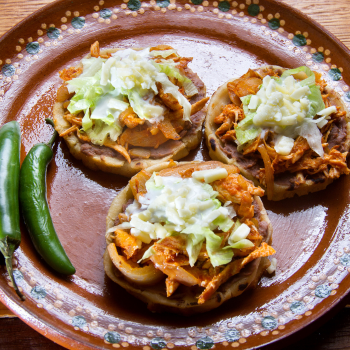
These thick, round tortillas are pinched at the edges to create a border, then topped with refried beans, meat, lettuce, cheese, and crema.
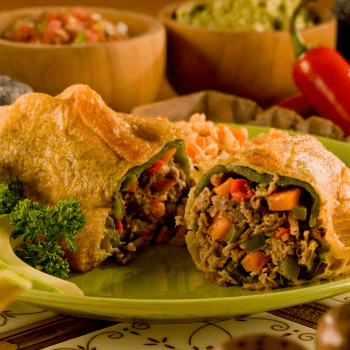
Poblano peppers are stuffed with cheese, meat, or a combination of both, then dipped in egg batter and fried. They are often served with a tomato-based sauce.

Mole is a rich, complex sauce made with ingredients like chocolate, chiles, and spices. It's typically served over chicken or turkey and comes in various regional variations, such as mole poblano and mole negro.
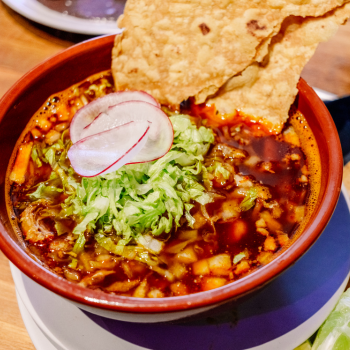
Pozole is a hearty soup made from hominy (dried maize kernels) and meat (usually pork or chicken). It's typically garnished with radishes, lettuce, onion, and dried chili flakes.

Chilaquiles are tortilla chips that are simmered in red or green salsa until they soften. They are often topped with crema, cheese, and sometimes eggs.
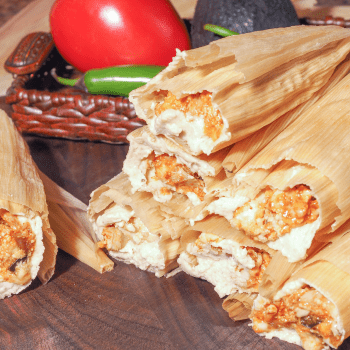
Tamales consist of masa (corn dough) filled with meats, cheese, or vegetables, wrapped in corn husks, and steamed. They are a popular street food.

Mexico boasts a rich and multifaceted culture with a tapestry of customs and traditions deeply ingrained in the daily lives of its people.
Spanish is the official language, but many Mexicans also speak indigenous languages like Nahuatl, Maya, and Zapotec. Mexico's regional accents and dialects can vary significantly.
Mexico is predominantly Catholic, and religious traditions are integral to the culture. Festivals, processions, and religious holidays are celebrated with great fervor. The Day of the Dead (Dia de los Muertos) is one of the most famous and vibrant Mexican religious traditions.
Mexicans are renowned for their warm and welcoming nature. Visitors are often greeted with open arms, and hospitality is a cherished cultural value.
Mexico hosts a multitude of festivals throughout the year. These include regional fiestas, religious celebrations, and national holidays like Independence Day (Dia de la Independencia).
Mexico's customs are deeply rooted in traditions related to life events, including weddings, quinceañeras (a girl's fifteenth birthday), baptisms, and religious ceremonies.
Environmental awareness is an important cultural value, with Mexicans often incorporating respect for nature and conservation practices into their way of life.
Family plays a central role in Mexican culture. Multigenerational households are common, and respect for elders is deeply ingrained. Mexican communities are often close-knit, and social interactions are warm and welcoming.
Mexico experiences a variety of climate patterns due to its diverse geography, so the exact seasons can vary depending on the region.

Generally, Mexico can be divided into three main climate zones:
Desert Climate: Northern Mexico, near the U.S. border, experiences a desert climate with hot summers and cooler winters. There can be temperature extremes in the summer, with very high temperatures, and colder temperatures in the winter.
Passport: You will need a valid passport to enter Mexico. Ensure that your passport has at least six months of validity remaining beyond your planned departure date.
Tourist Card (FMM): Most tourists travelling to Mexico by air will receive a tourist card, also known as a Forma Migratoria Multiple (FMM), on the flight or upon arrival. This card must be filled out and kept with you throughout your stay. The FMM allows tourists to stay in Mexico for up to 180 days.
Visa Requirements: Depending on your citizenship, you may or may not require a visa to enter Mexico as a tourist. Citizens of many countries, including the United States, Canada, the European Union, Australia, and many others, do not need a visa for stays under 180 days. However, it’s essential to check the specific visa requirements based on your nationality before traveling.
For visa information: https://embamex.sre.gob.mx/australia/index.php/visitorvisa
Note: Please double-check the above links and requirements before making travel arrangements, as they are subject to change.
All COVID-19 travel restrictions for entry into Mexico have been removed, and face masks are no longer required.
In summary, Mexico is a captivating blend of culture, history, and natural wonders, offering travelers a diverse array of experiences. The warm hospitality of the Mexican people, coupled with their deep-rooted traditions and mouthwatering cuisine, ensures a welcoming and enriching journey.
Whether you seek adventure, relaxation, or cultural immersion, Mexico promises an unforgettable voyage that leaves a lasting mark on your heart. With its rich history, stunning scenery, and hospitable locals, Mexico invites you to embrace its boundless wonders, awakening your senses and nurturing your spirit.
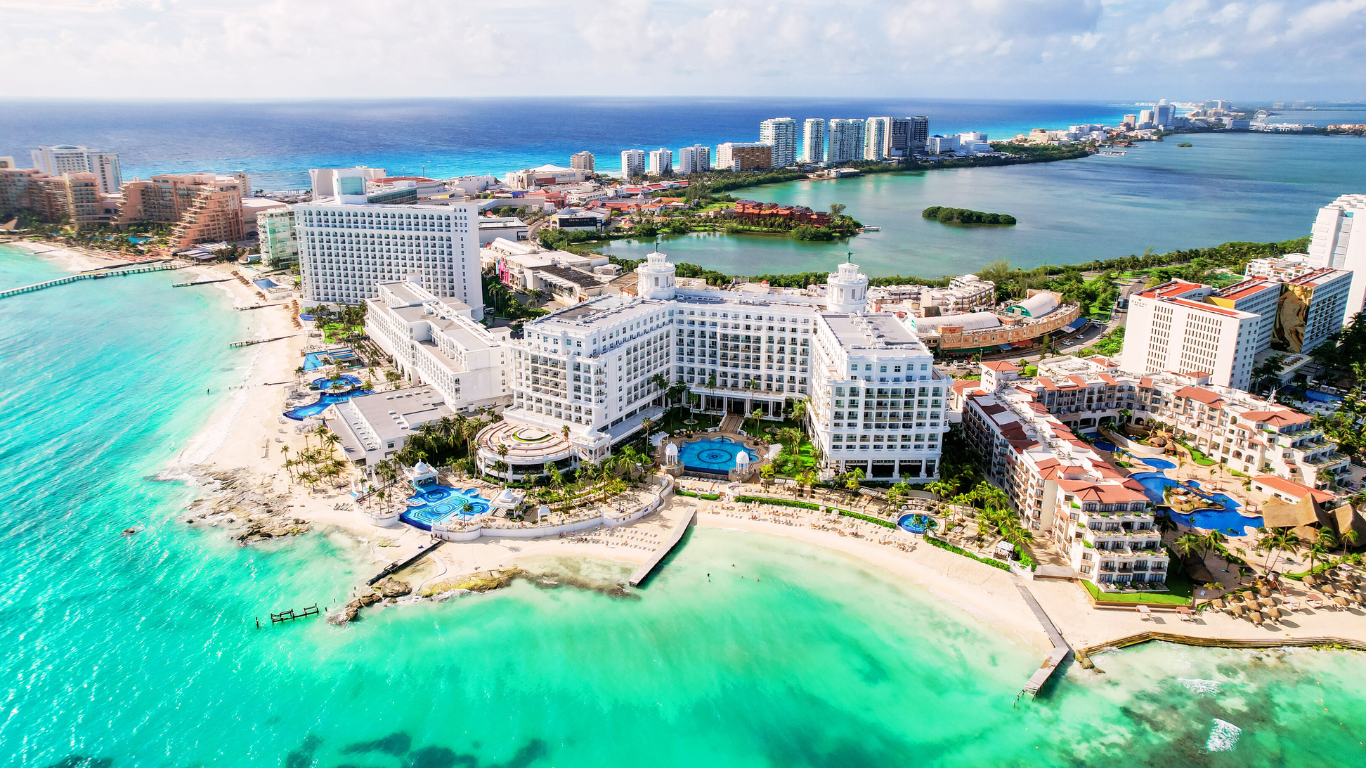
Please ensure you have a confirmed booking with the resort before paying for flights.

Explore Mexico’s beauty and culture with our comprehensive travel guide. Discover top destinations, cuisine, and local insights.
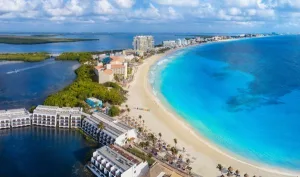
Read our Travel Guide for your Cancun vacation, we recommend restaurants, things to do and some of the best beaches!